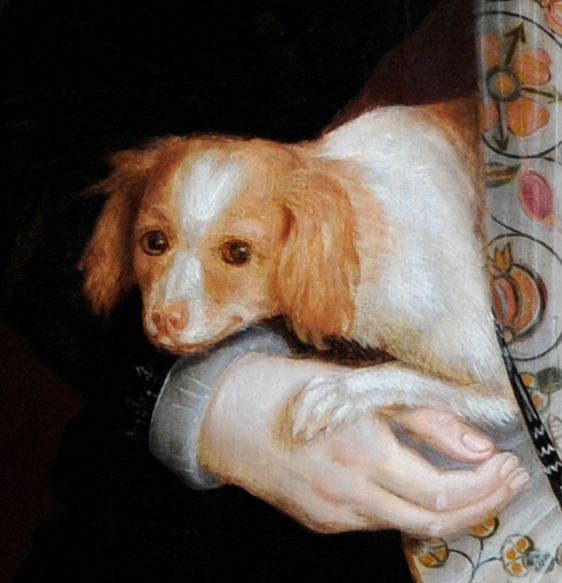In Tudor times, only the very rich could afford to have their portraits painted. Paintings of poorer people from this time are rare. In the past, people used portraits as a way of showing their wealth, status and power. They displayed the portraits in the same way that people post photographs of themselves on social media today. Some of this wealth will have come from the global trade routes, and the exploitation of people and resources that became the British Empire. The portraits below are part of the Leeds Museums and Galleries collections at Temple Newsam House. All the portraits are of white people who were part of the ‘landed gentry’ of England, and there is a noticeable absence of anyone from a diverse community. This doesn’t mean that people of Black and Asian heritage weren’t in Yorkshire at that time, just that we don’t hold any visual representations of them. See the supporting resources for links of nationwide stories.
When sitting for a portrait people would dress very carefully, using clothing and accessories to present a carefully constructed image. Jewellery, expensive fabrics, embroidered cloth or objects beside them were used to suggest to the viewer that the person in the portrait was important or rich.
Some people had their pet 'toy' dogs in their portraits. At the time most people kept dogs as working animals and to keep a pet purely for pleasure, as a 'toy', was another sign that you were among the wealthiest in society.
Clothing in Portraits
People often dressed in fabrics in rich, dark colours for portraits, as these were the most expensive dyes. You can also see that people are wearing many layers of material and garments, such as:
- Ruffs made of lace were worn by better off Tudor people. Lace was then an expensive material, because it had to be imported from Brussels or Italy. Ruffs had no practical purpose, people just wore them to be fashionable and thought that the bigger their ruff, the wealthier it would make them look.
- Look out for gloves (worn by both ladies and men) in the portraits. They were very popular among the rich, as they showed that the wearers did not do any manual work. Queen Elizabeth was given many pairs of gloves as presents. Wealthy people used scent on their gloves to conceal bad smells.
- Tudor ladies often carried a sweet purse, in which they carried rose petals or dried lavender and spices. This was to cover up any nasty odours, as the clothes they wore were not washed regularly and people bathed rarely.
- Pale, whitened skin was fashionable among Tudor ladies. A pale complexion was a clear sign that you did not work outside, because you had servants to work for you. Many Tudor ladies, including Queen Elizabeth I, used make-up to make themselves look paler and to cover marks or scars. However, this contained dangerous substances like white lead, which we now know is poisonous. Women often suffered from side-effects, such as irritated skin or hair loss.
- Expensive clothes were often made of silk. Silk weaving began in China and expanded along the ‘Silk Roads’ through Asia and North Africa reaching Spain in 712, Italy in the 1200s, France and the Netherlands in the 1400s and later to England. Imports of raw silk exploded between 1560 and 1593 as the industry boomed in London. One such silk weaver was Reasonable Blackman of Southwark, London (see supporting links for further information). The impact of the industry on society is shown through literary references, such as when Shakespeare refers to Othello’s silk handkerchief from Africa.




